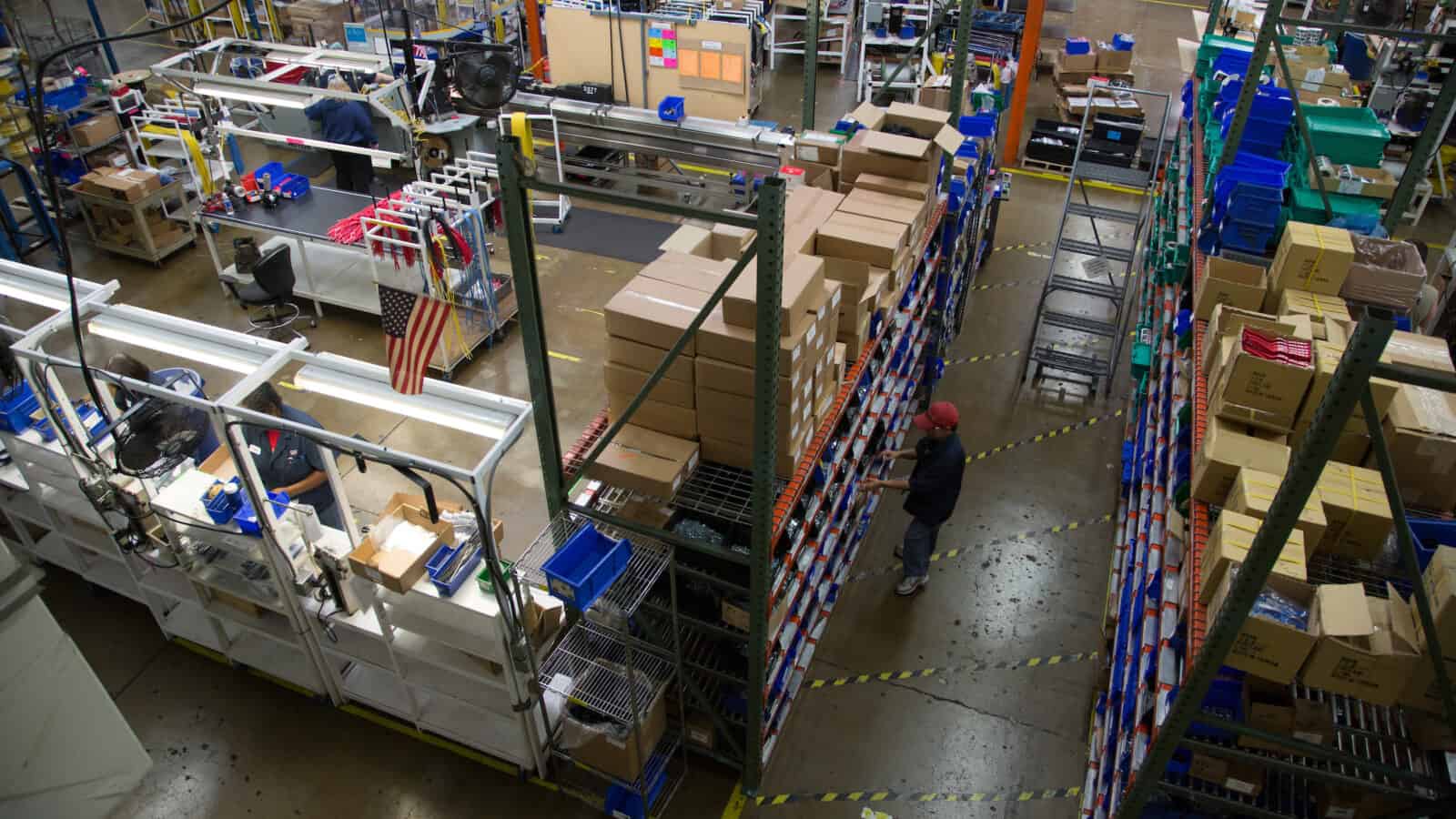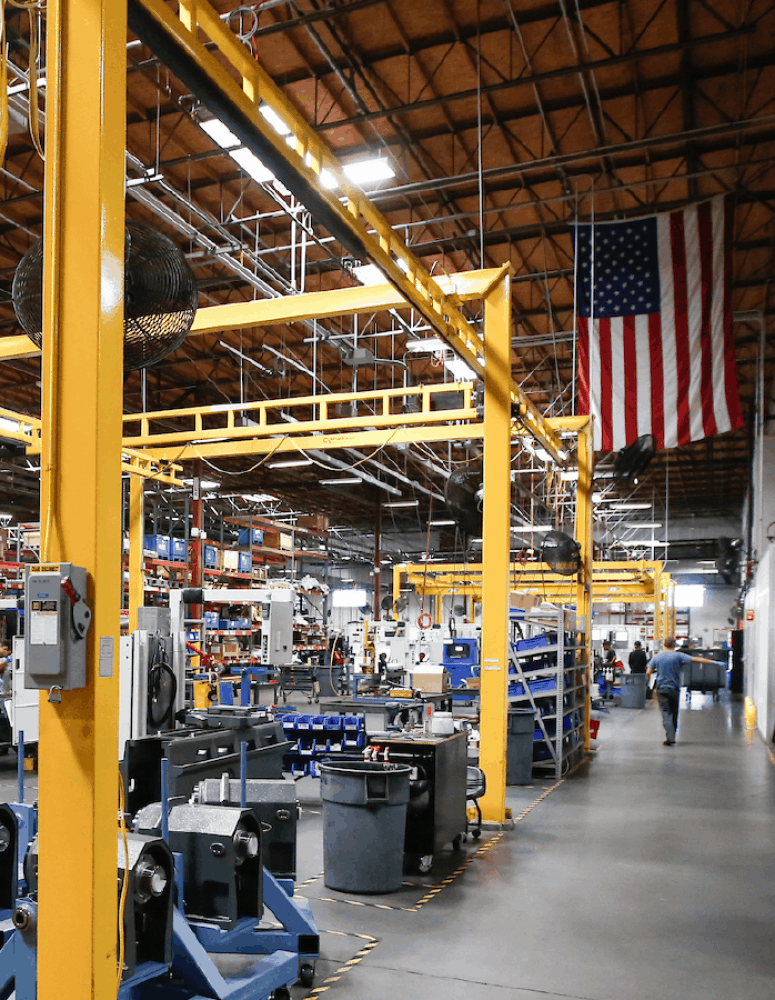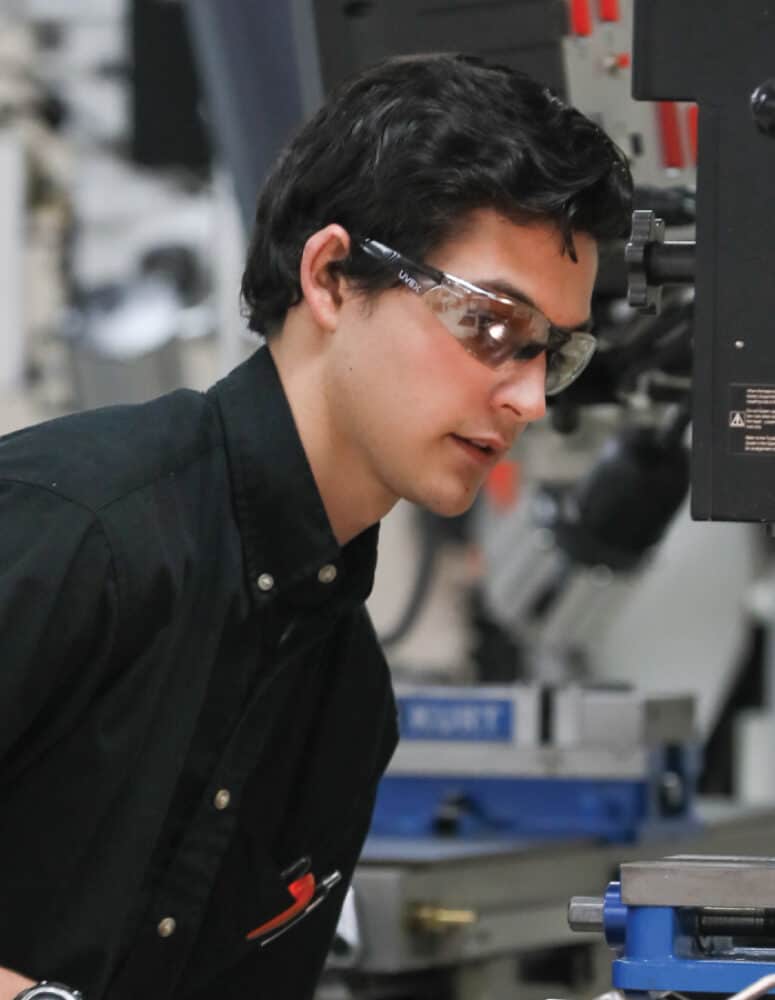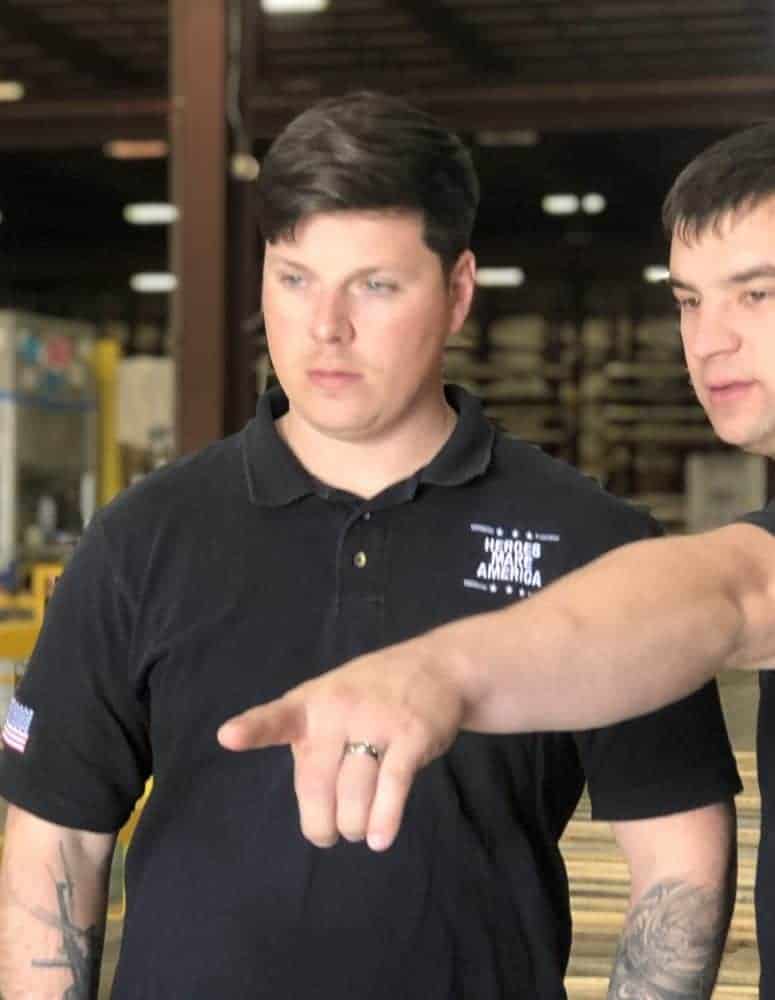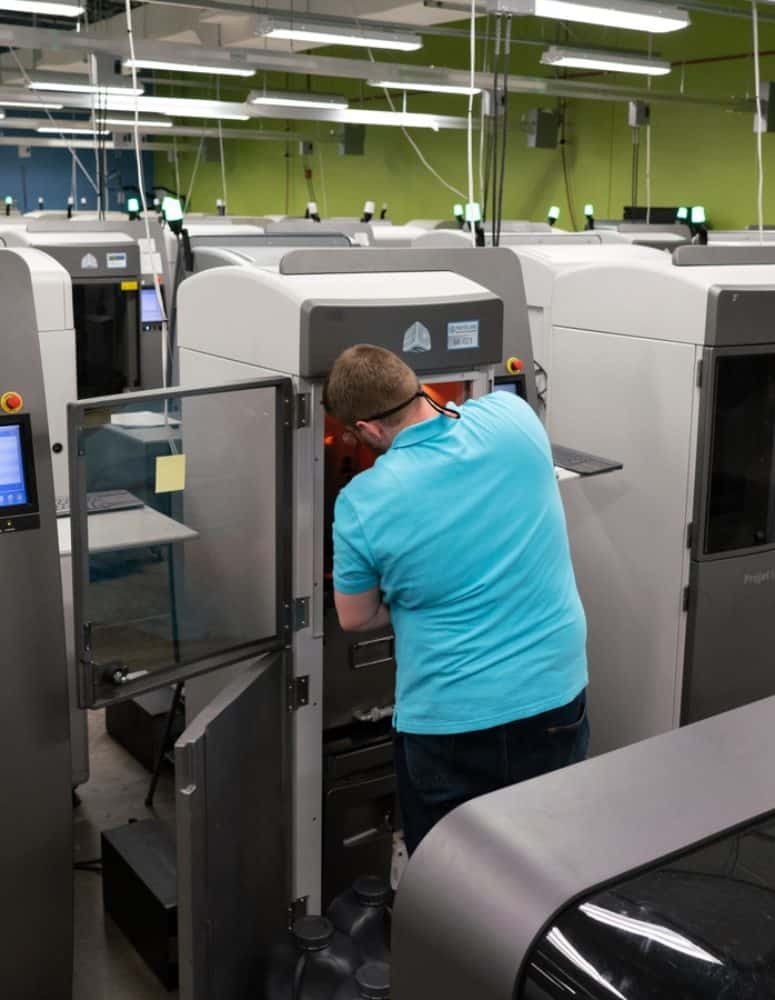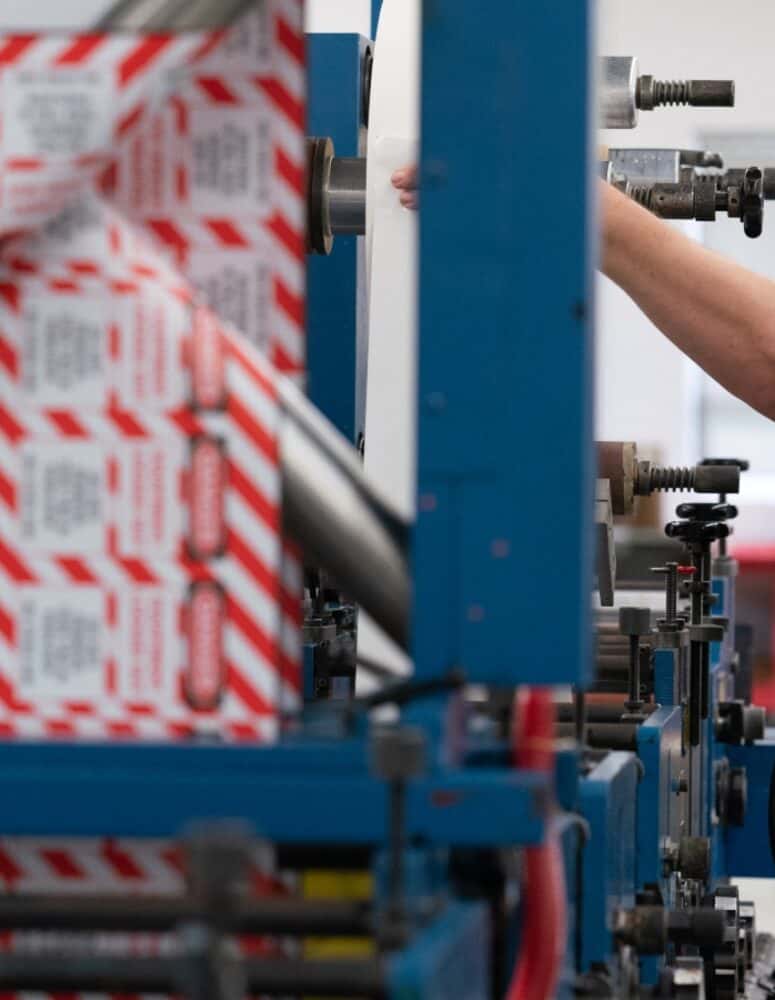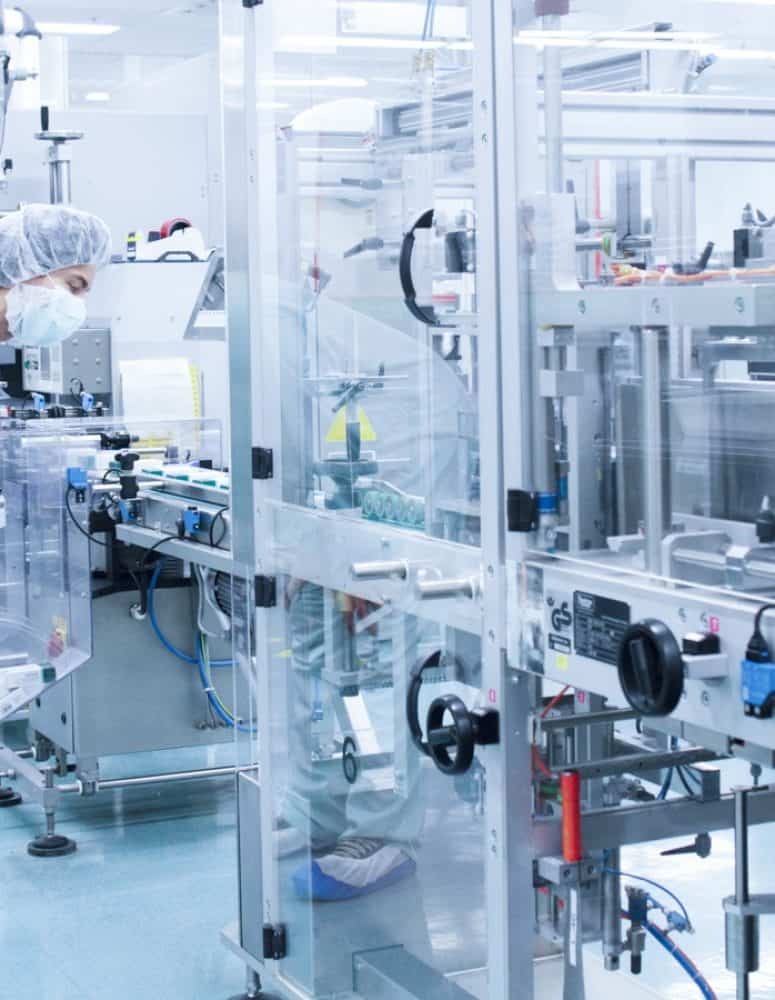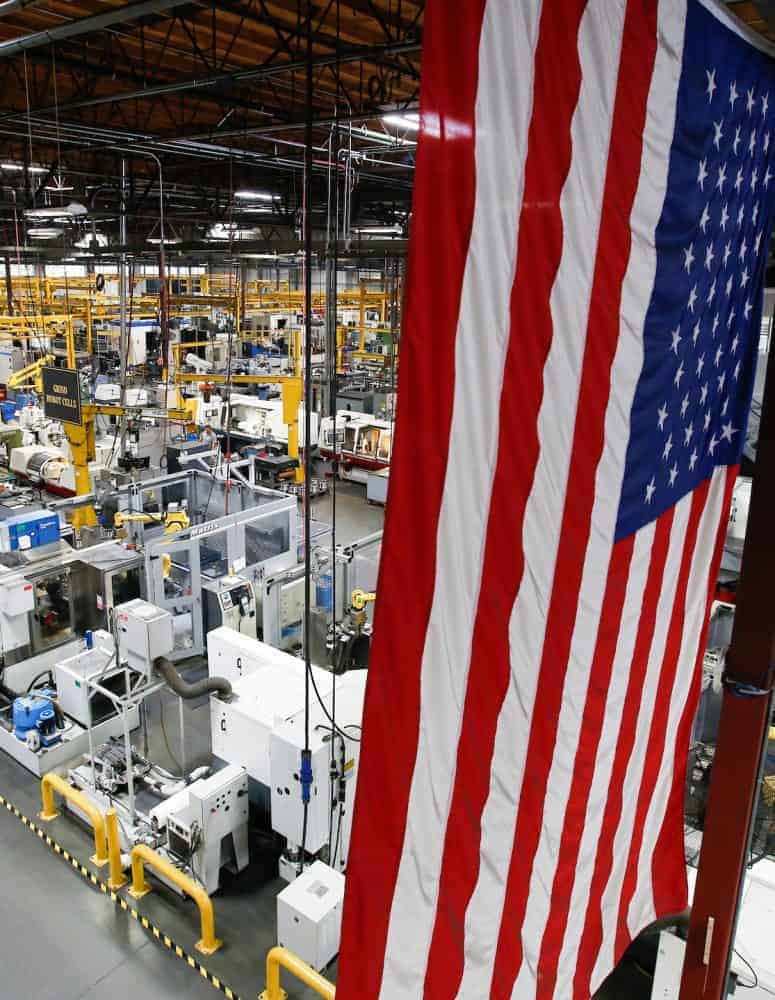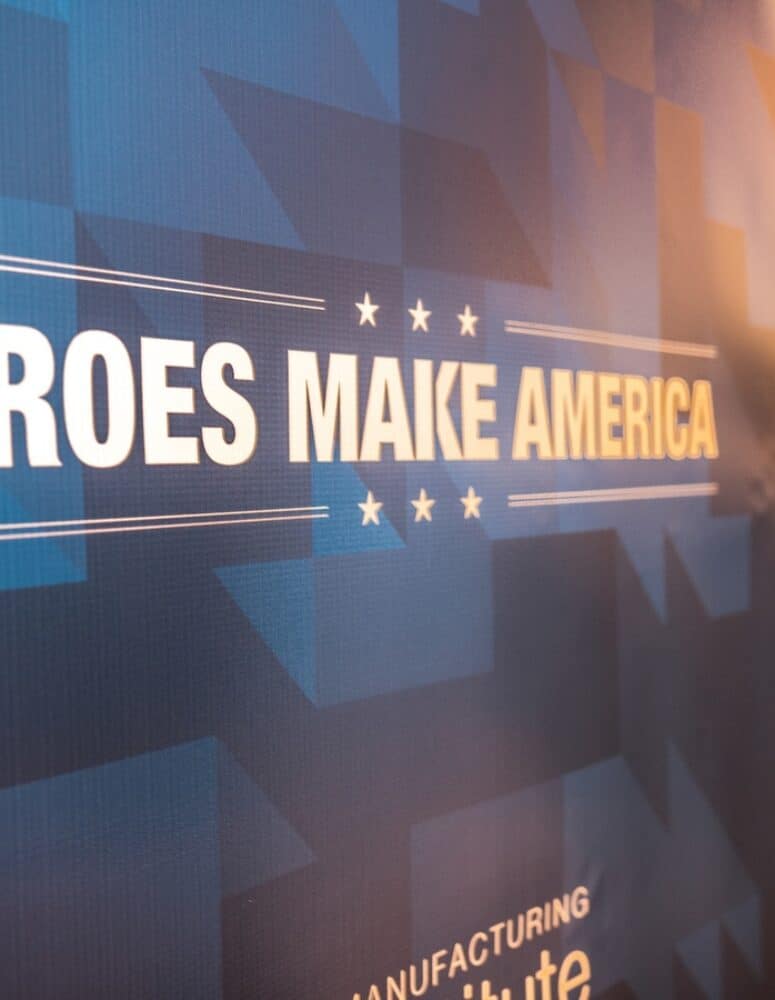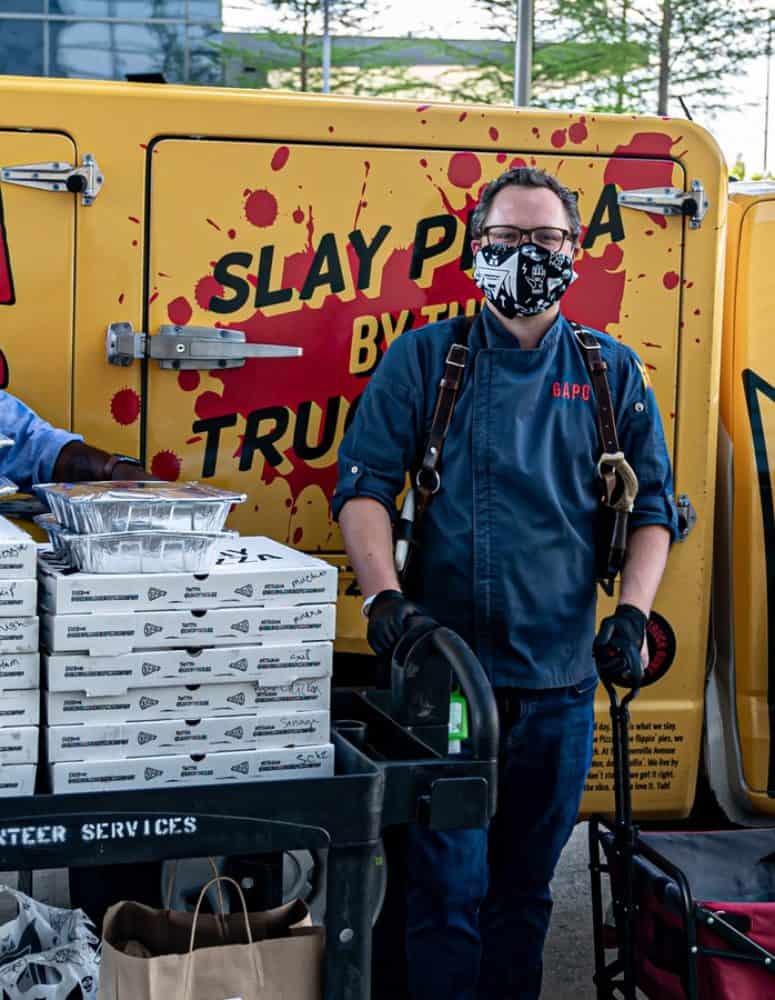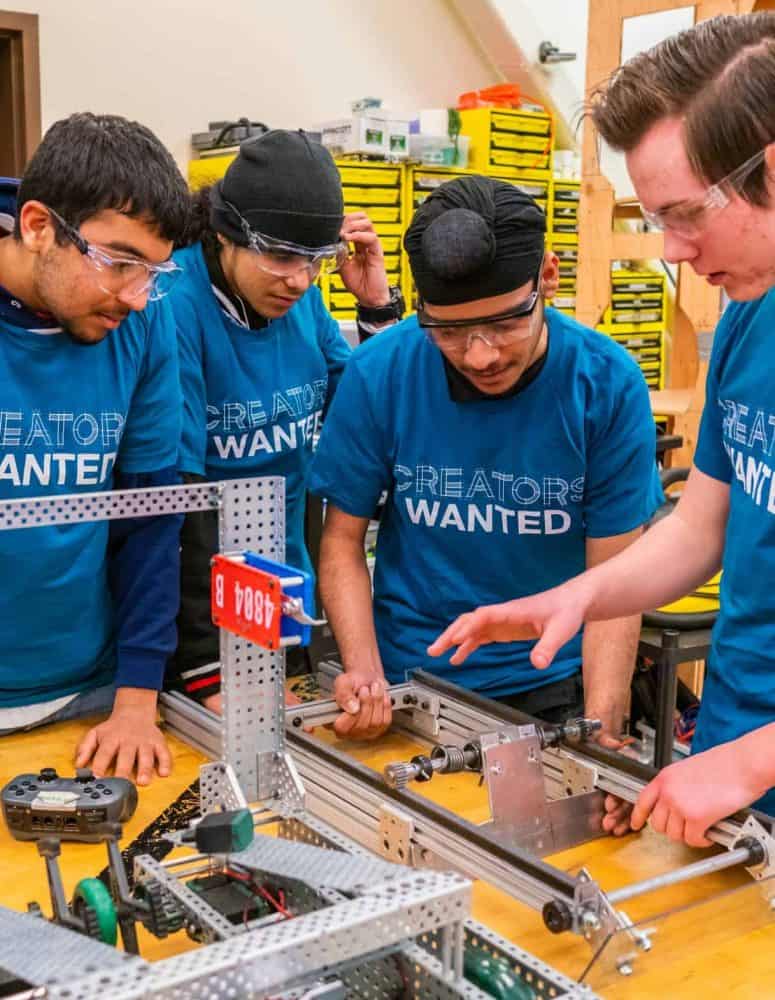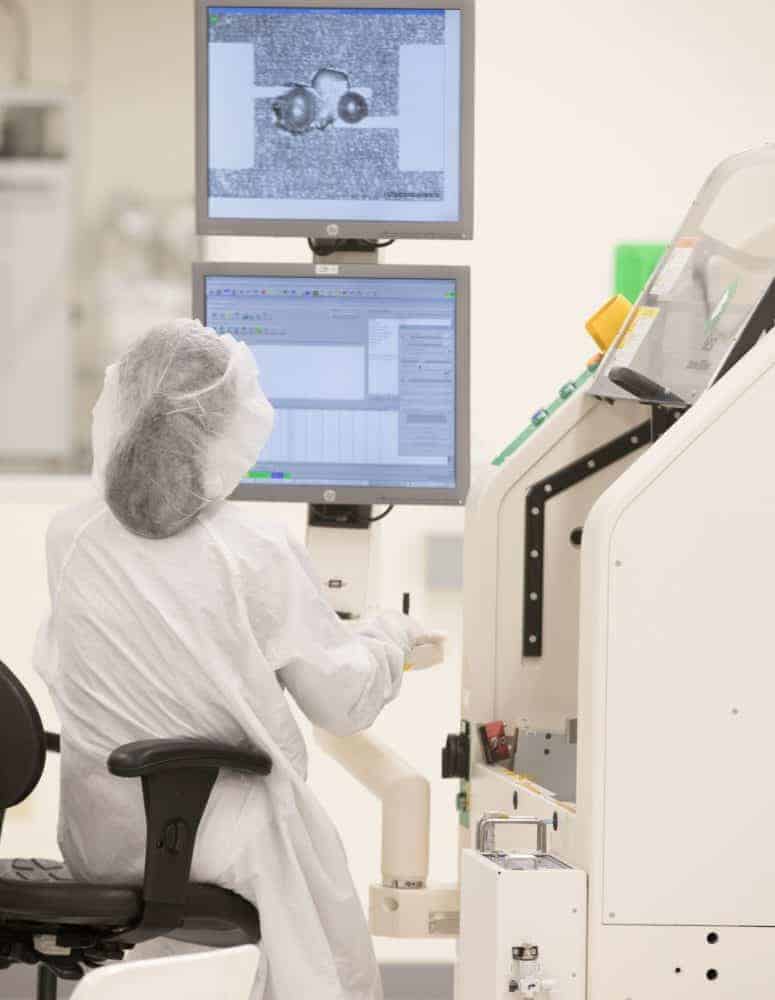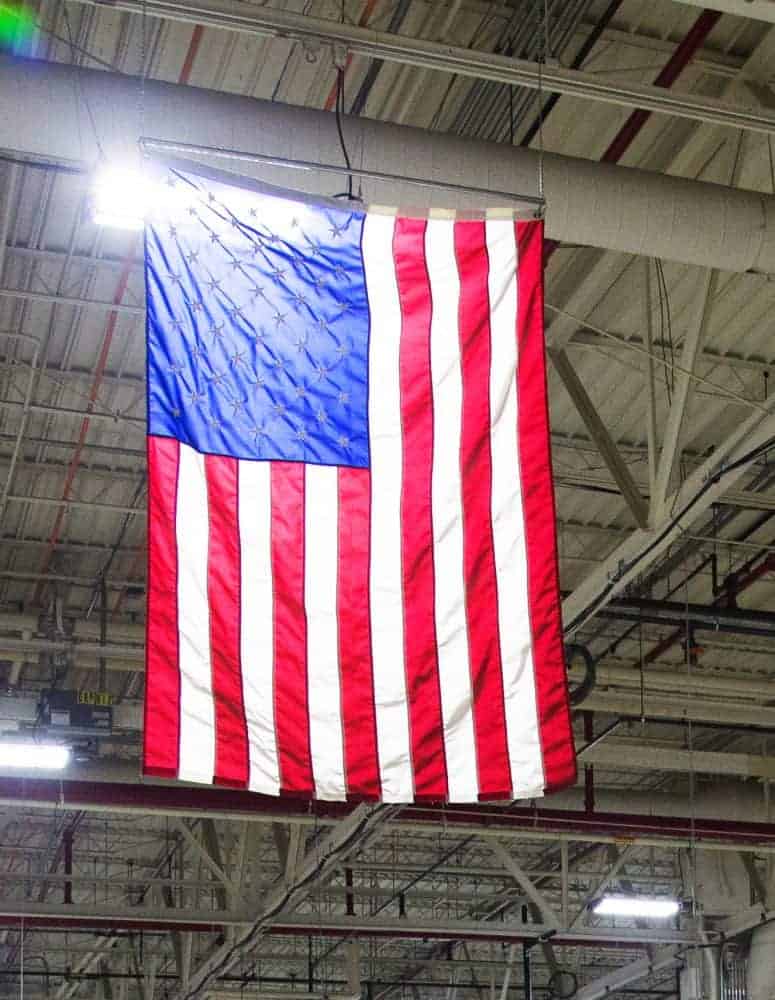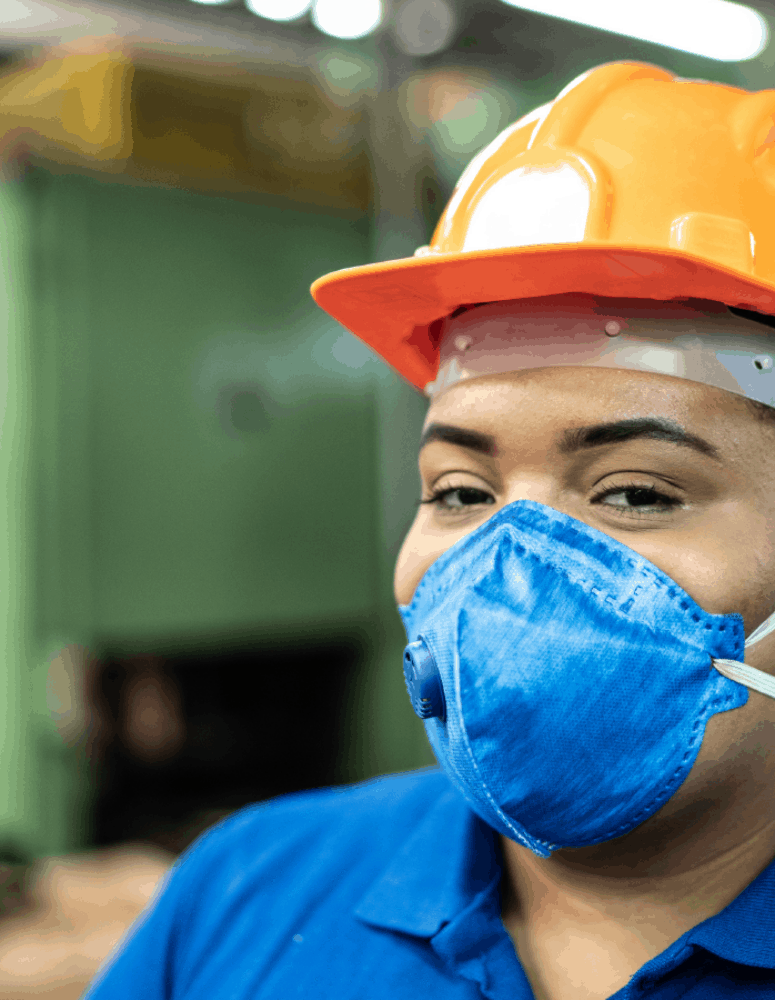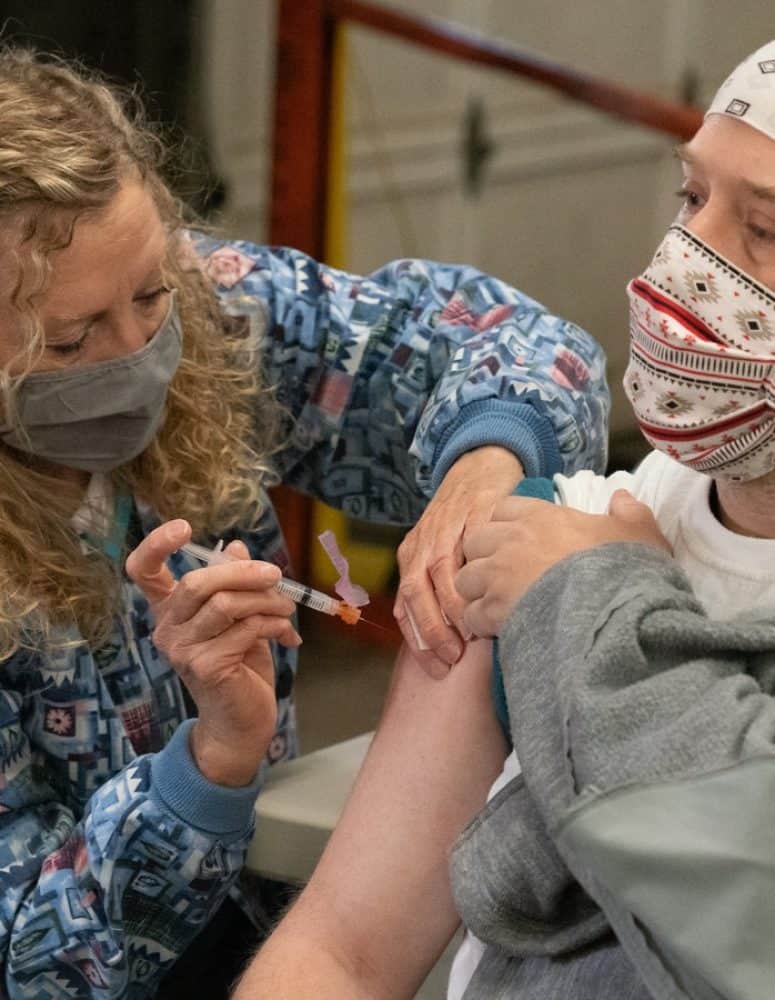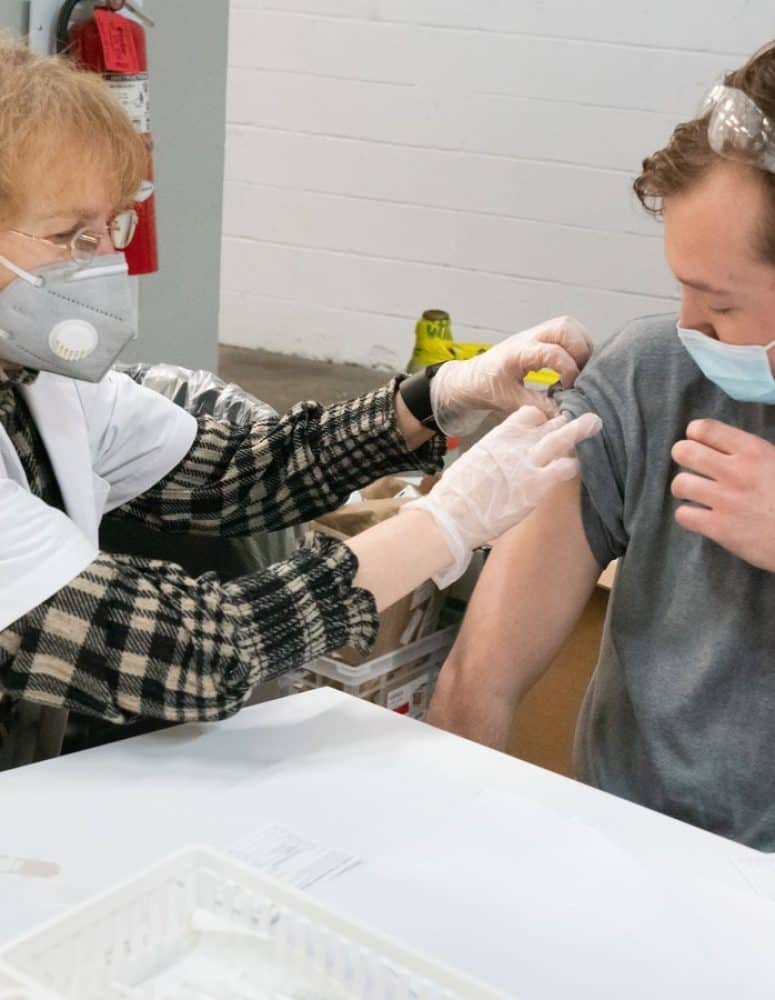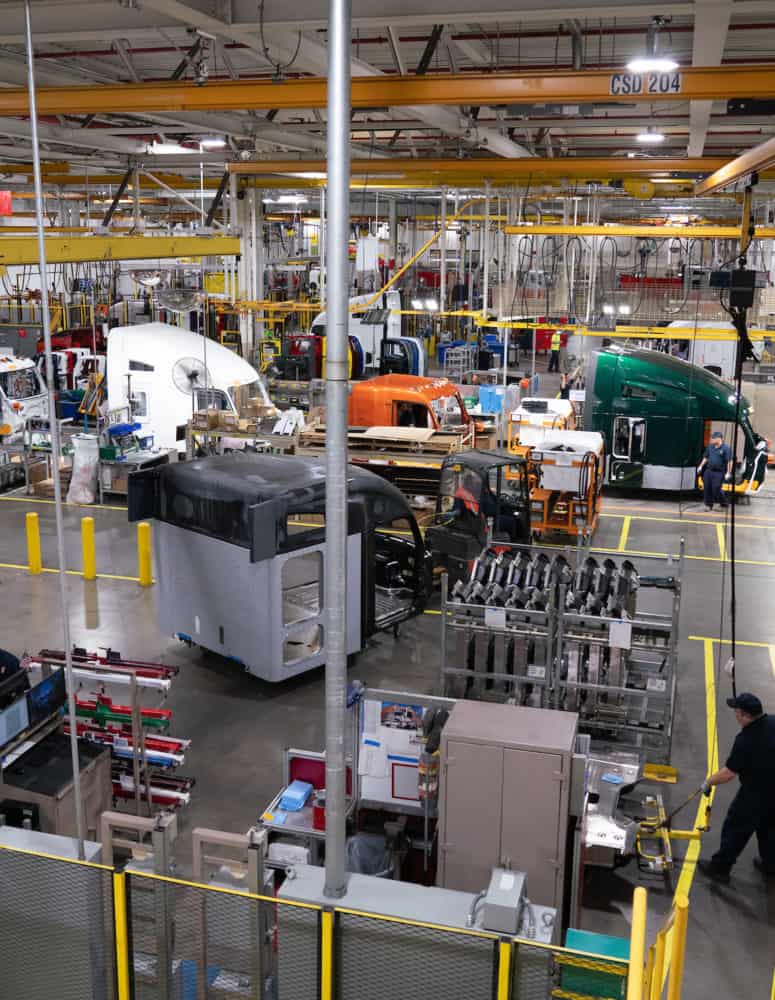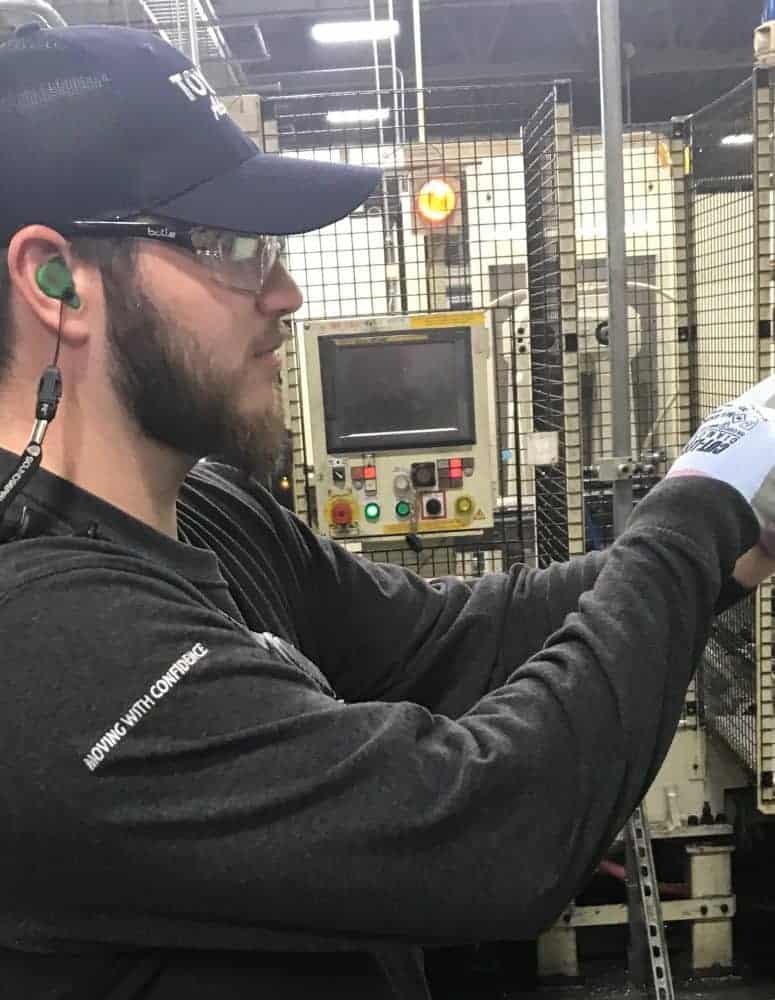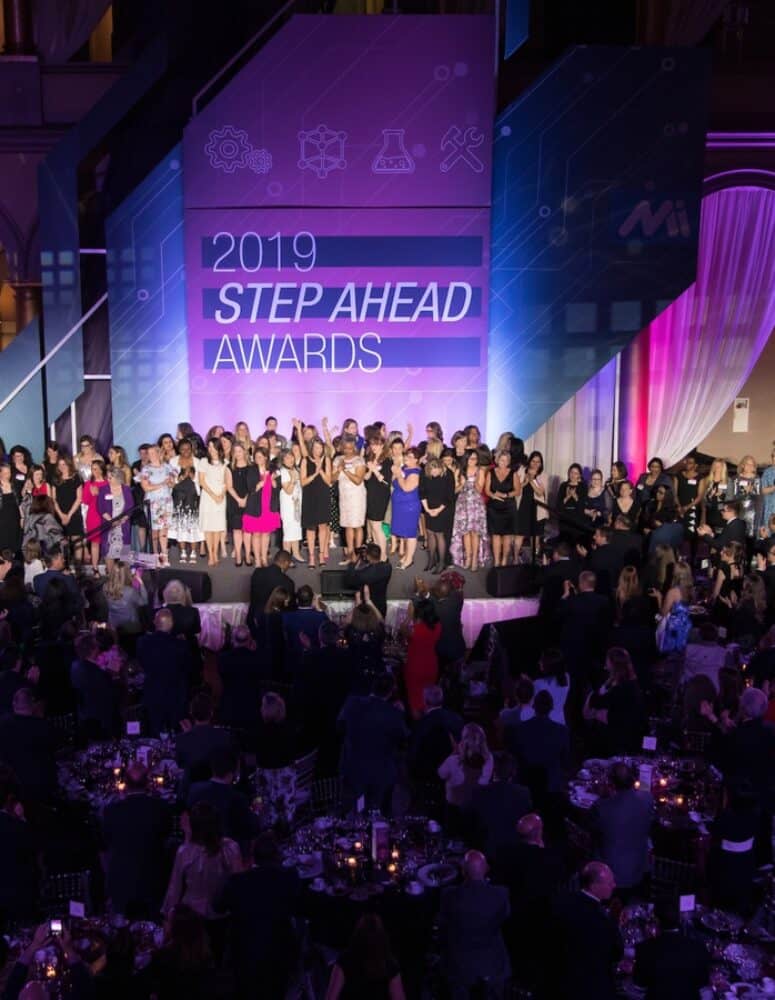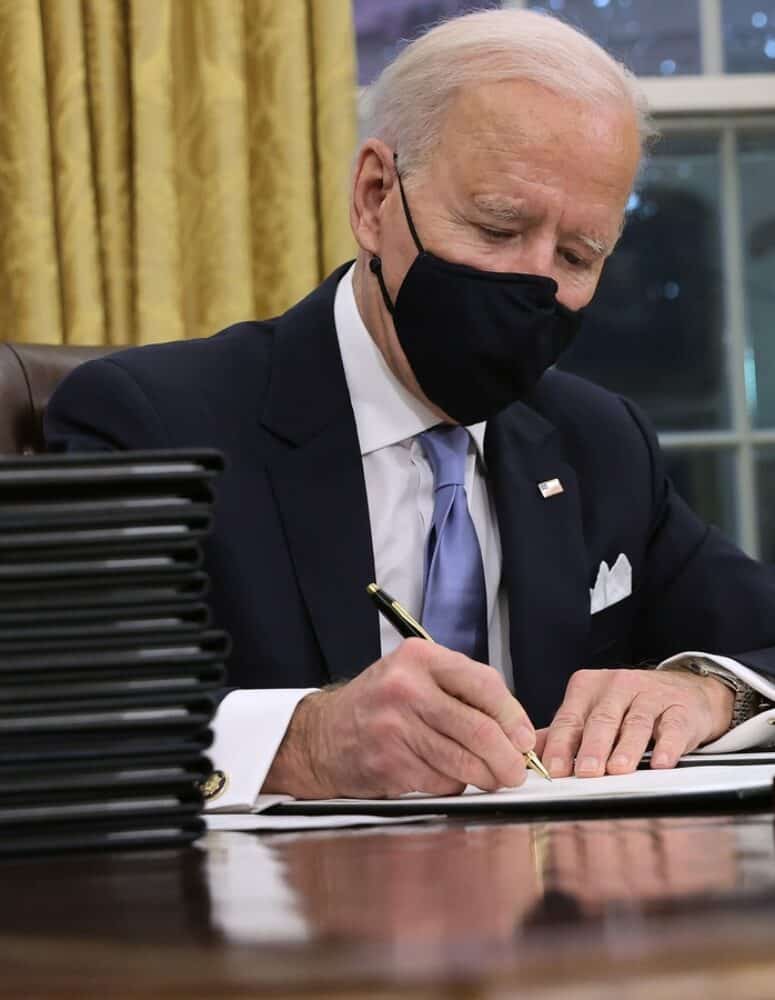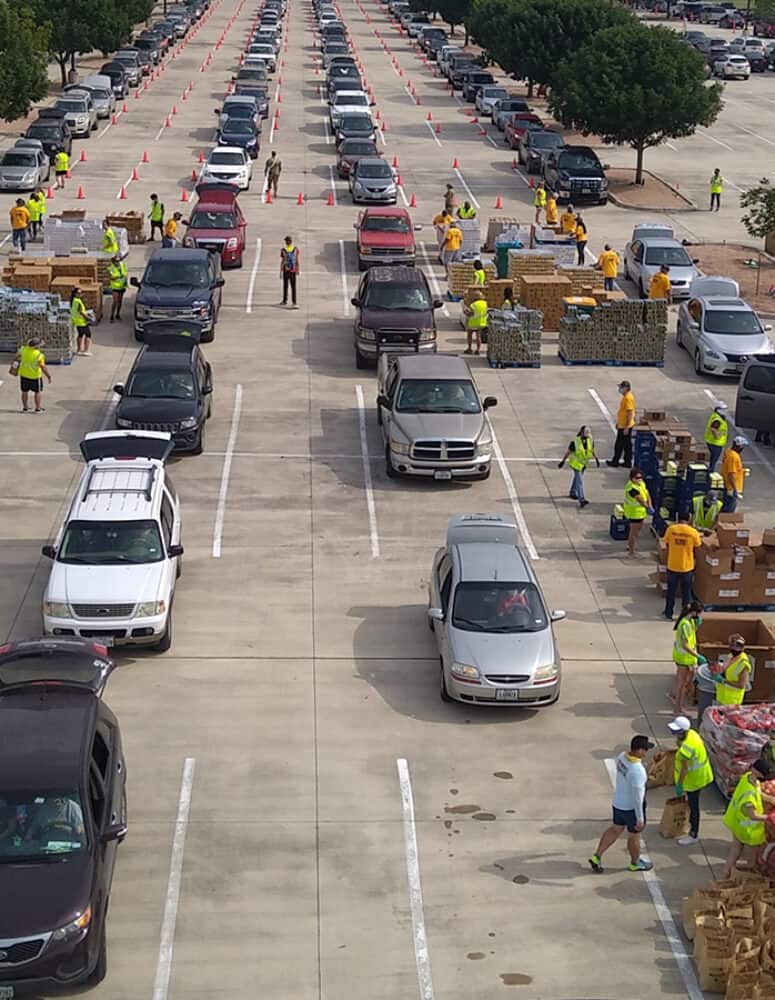Second Chance Hiring Strengthens Manufacturing
Get the Latest News
Sign up here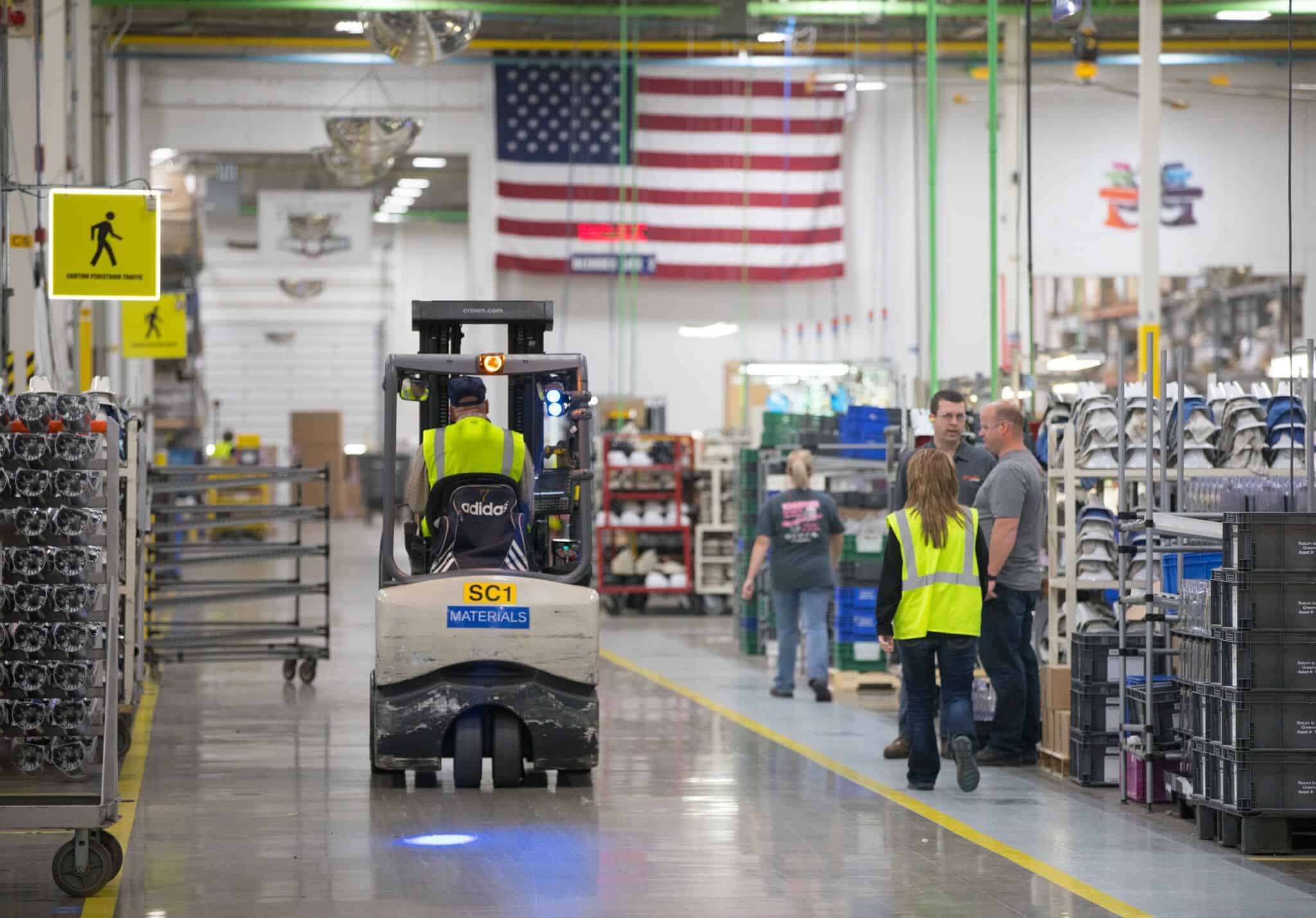
Helping people with criminal records find good jobs is not just the right thing to do, but a way to strengthen the manufacturing industry for years to come. That’s why The Manufacturing Institute—the workforce development and education partner of the NAM—is partnering with Stand Together and the Charles Koch Institute to help manufacturers recruit from this population and fill some of the thousands of job openings within the industry.
Brianna Nuhfer, director of criminal justice for the Stand Together philanthropic community, spoke to us recently about the importance of second chance hiring and the opportunities it offers for manufacturers.
Why it matters: A criminal record is often a significant barrier to employment, preventing people from finding new jobs and building better lives. Not all people with criminal records have been incarcerated, but for those who have been, second chance hiring also significantly increases the success of reentry.
- “The vast majority of incarcerated individuals—over 95% of people who are incarcerated—will be returning to our communities and our neighborhoods,” Nuhfer says. “We want to make sure that their return is as successful as possible, and we know that employment is one of the primary factors that helps people get back on track and avoid recidivism or returning to prison.”
Why it matters for manufacturers: Hiring Americans with criminal records is also important for the success of the manufacturing industry. Right now, manufacturers are facing a significant shortage of skilled workers; in fact, a recent study by Deloitte and the MI suggests that the skills gap could result in 2.1 million unfilled jobs by 2030. Manufacturers need workforce-ready employees, and many people with criminal records fit the bill.
Building a smart workforce: According to Nuhfer, research shows that workers with criminal records often have the lowest turnover rates of all employees. She cites several other key advantages:
- 82% of managers report that the value these workers bring to companies is just as high as—if not higher than—the value that their employees without criminal records provide.
- Many formerly incarcerated people received manufacturing-related training while they were in correctional facilities, preparing them for work in the modern industry.
Building partnerships: The partnership with the MI will increase awareness of second chance hiring opportunities and help manufacturers recruit, train and support these workers.
- “The NAM and The Manufacturing Institute have such an incredible reach across the country, and their leadership is undeniable,” said Nuhfer. “The resources you put out for the field are utilized and noticed—and so your involvement and your commitment to this issue is going to have an incredible ripple effect across the country, opening up thousands of employment opportunities for deserving individuals.”
Creating a culture: For company leaders interested in second chance hiring, Nuhfer has some simple advice: these hiring practices shouldn’t just be a matter of policy, but also a matter of culture. Leaders should demonstrate by example that their companies value smart, talented workers of all backgrounds.
The MI says: “Second chance hiring gives businesses an opportunity to welcome highly motivated, engaged, productive and loyal new team members who may otherwise be overlooked,” said MI Executive Director Carolyn Lee. “This is not only the right thing to do for our businesses, but it’s also the right thing to strengthen our communities.”
The last word: “All of us are more than our choices, good or bad,” said Nuhfer. “None of us wants to be defined by the worst decision we’ve ever made for the rest of our lives.”
To learn more about second chance hiring, register here for an upcoming webinar on June 10.
40 Years in Manufacturing: An Interview with Former CEO Vicki Holt
Get the Latest News
Sign up here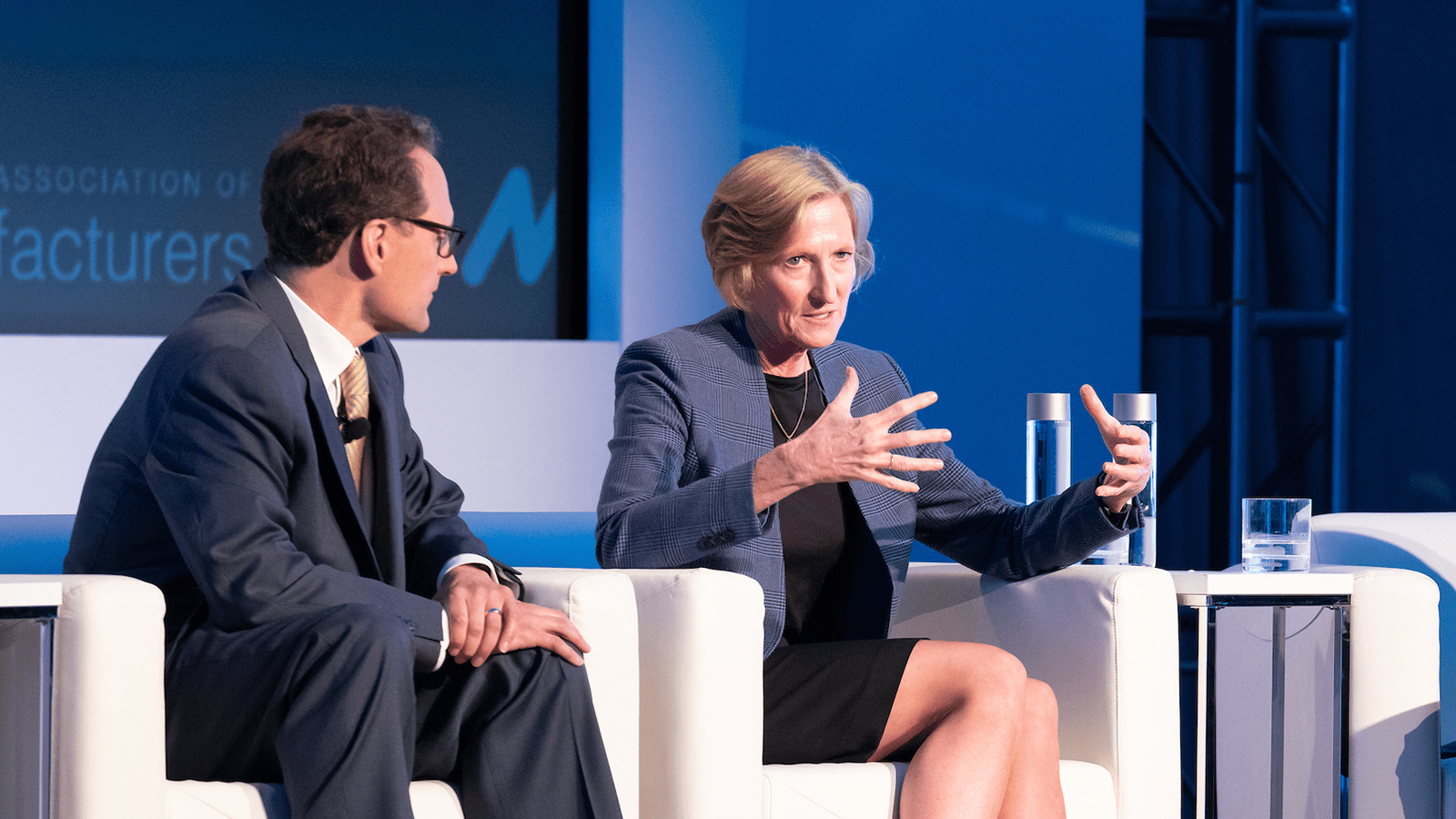
Vicki Holt wants to tell you about digitization. The recently retired CEO of Protolabs, Holt got her start in manufacturing more than 40 years ago and has seen the industry transformed by digital technologies. “By helping manufacturers seize the opportunities of digitization, I believe I am helping them innovate and solve some of the world’s problems,” she explains.
Over the course of her career, Holt led the glass division of PPG, making homes and buildings more energy efficient with solar glazing, then developed sustainable packaging as CEO of Spartech, and from there took charge of digital manufacturing powerhouse Protolabs. We talked to Holt recently about her career, as well as her tenure as the vice chair of the NAM’s Small and Medium-Sized Manufacturers Group, NAM Executive Committee member and as a board member of the NAM’s Manufacturing Leadership Council. Though she has retired from both roles, she remains a key figure in the NAM’s orbit, having recently become a board member at The Manufacturing Institute, the workforce development and education partner of the NAM.
Why the NAM? Holt explains that when she was asked to join the NAM in 2016, she saw it as an opportunity to help manufacturers learn.
- “It was a way for me to get involved and give back, at a time when manufacturing was on the cusp of a new technological revolution,” she says. “I didn’t get involved to influence policy in Washington, but to influence manufacturers themselves.”
By 2017, she had been elected the vice chair of the NAM’s SMM Group, a position she held until her retirement this year. As she notes, the collaboration between the big companies and the smaller ones at the NAM benefits everyone:
- “For example, the big companies were able to dedicate teams to figuring out COVID-19 safety in their factories, and the small and medium-sized companies learned from them. But the big companies also need the smaller ones, because they are essential to supply chains.”
An example of innovation: Holt holds up Protolabs as a prime example of what digitization can do.
- “It used to take companies a long time to innovate, which would stretch out the time for product development. It would take months to make a custom part. Protolabs’ founder broke apart all the things that go into manufacturing a custom injection mold tool and automated the process. What used to take weeks could now be done in a day or two, and all using e-commerce.”
Holt remains an avid watcher of digitization trends, observing that “COVID-19 has accelerated the shift to B-to-B e-commerce throughout the industry, making manufacturers more comfortable connecting to their suppliers digitally.”
Getting manufacturers together: While she was involved with the NAM, Holt also served as a board member of the MLC, which the NAM acquired in 2018 with her encouragement.
- “What I’ve learned through the MLC is that manufacturers are really generous in sharing their learning with other companies,” Holt says. “And that sharing fuels innovation and collaboration.”
- “The MLC complements the NAM,” she adds, “because the NAM is about creating a policy environment that nurtures manufacturing. The MLC is about sharing knowledge about the manufacturing process itself.”
What’s next? Holt is keeping active in retirement. She serves as a board member of several companies—including water heater and treatment maker A.O. Smith Corporation, Waste Management and financial services firm Piper Sandler.
- She is focusing on sustainability in several of these roles and was encouraged to see the Biden administration’s plan for emissions reduction. As she puts it, “If you can unleash manufacturers to innovate, we can reach those targets, even if we don’t have the answers today.”
Holt is also passionate about the mission of the MI:
- “If manufacturers are going to achieve our potential in innovation and digitization, we’ve got to attract people to the industry and show them it’s moved on since the 50s,” she says. “Our frontline employees now solve problems and improve operations in a high-tech environment.”
The last word: Holt says about her time at the NAM, the MLC and the MI, “I’ve just been so impressed with the leaders I’ve met there and their dedication to collaborating and tackling issues like diversity and inclusion. I really appreciate the opportunities afforded to me by being involved in these organizations.”
The Manufacturing Institute Goes to Capitol Hill
Get the Latest News
Sign up here
Manufacturing Institute Executive Director Carolyn Lee testified virtually before the House Committee on Veterans’ Affairs’ Subcommittee on Economic Opportunity yesterday, detailing the MI’s work with transitioning service members during the pandemic. Here are some highlights from her testimony.
COVID-19’s impact: According to Lee, the COVID-19 pandemic made it much more difficult for transitioning service members to access key resources, including training programs, fellowships and internships.
Our work: The MI’s Heroes MAKE America initiative helped develop workarounds for these challenges, Lee testified.
- “At the onset of the pandemic, we collaborated with our education partners to pivot most of our program delivery to virtual platforms or socially distanced environments—within a matter of weeks,” she said. “COVID-19 also accelerated the deployment of fully remote learning for Heroes participants, proving that we can deliver some certifications online.”
- Lee also highlighted the launch of Heroes Connect, which allowed transitioning service members to network virtually with hiring managers from manufacturers across the country.
Heroes’ overall success: The Heroes program has been very successful since its creation only three years ago, Lee noted. “Since its inception in January 2018, Heroes MAKE America has had a placement rate of 92%. Participants have found jobs at more than 250 companies in 39 states.”
- She added, “Notably, 55% of our participants have no post-secondary education, indicating a strong need for support to position them for success in a career after their time in uniform.”
What policymakers can do: Lastly, Lee recommended policy changes that could make military transitions more accessible to service members and their families.
- First, “Congress should change eligibility requirements for Pell grants to allow students to pursue high-quality programs as short as eight weeks.”
- In addition, Lee recommended a separate allocation of funding under the Workforce Innovation and Opportunity Act for the military community. While those funds are currently given directly to states, which place limits on their use, service members may participate in training virtually or in a different location than where they transition. They need the flexibility to receive training or plan careers without worrying about state lines.
The last word: “Veterans are well positioned to succeed in a manufacturing career with skills, talents and training that are highly valued in the industry,” said Lee. “And with more than 700,000 manufacturing jobs open today—and 4 million to fill by 2030—they are in great demand. The Manufacturing Institute is committed to helping today’s American heroes become tomorrow’s manufacturing leaders.”
2.1 Million Manufacturing Jobs Could Go Unfilled by 2030
Get the Latest News
sign up here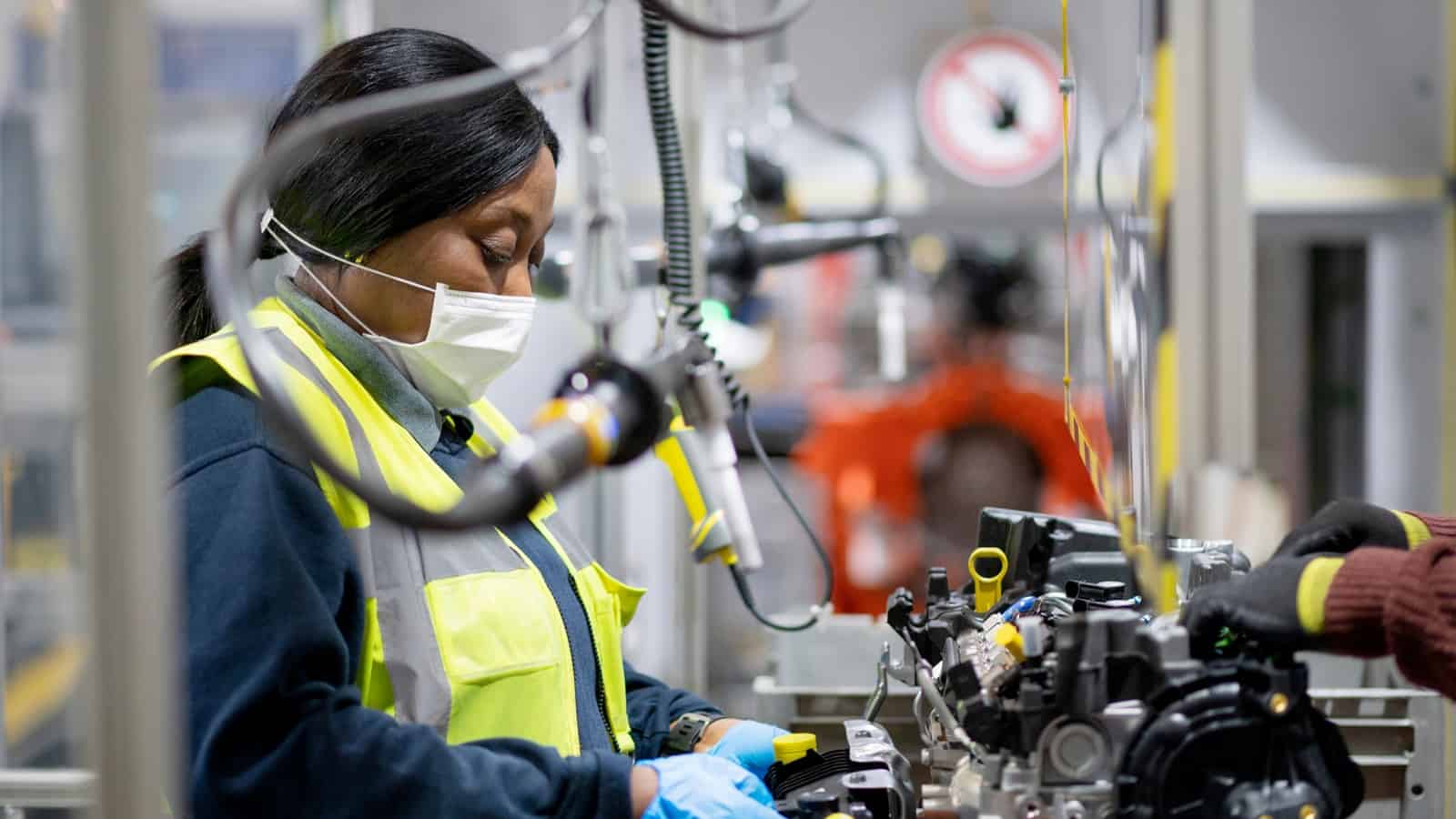
The manufacturing skills gap in the U.S. could result in 2.1 million unfilled jobs by 2030, according to a new study by Deloitte and The Manufacturing Institute, the workforce development and education partner of the NAM. The cost of those missing jobs could potentially total $1 trillion in 2030 alone.
The study’s dramatic findings come from online surveys of more than 800 U.S.-based manufacturing leaders, as well as interviews with executives across the industry and economic analyses. All told, they paint a worrying picture of manufacturing’s labor shortage. The lack of skilled labor was the industry’s major challenge even before the pandemic, according to the NAM’s quarterly outlook surveys—and this new study shows it’s still a major concern today.
The hard data: About 1.4 million U.S. manufacturing jobs were lost during the early days of the pandemic, according to the study, setting back the manufacturing labor force by more than a decade. However, the industry has largely recovered those lost jobs and is now urgently seeking more workers.
- While the manufacturing industry recouped 63% of jobs lost during the pandemic, the remaining 570,000 had not been added back by the end of 2020, despite a near record number of job openings in the sector.
The inside scoop: Manufacturers surveyed reported that finding the right talent is now 36% harder than it was in 2018, even though the unemployment rate has nearly doubled the supply of available workers.
- Executives reported they cannot even fill higher paying entry-level production positions, let alone find and retain skilled workers for specialized roles.
- A long-term challenge: 77% of manufacturers say they will have ongoing difficulties in attracting and retaining workers in 2021 and beyond.
A bright spot: Fortunately, the study found that diversity, equity and inclusion (DEI) initiatives exert a growing influence on workforce trends and can help manufacturers fill these empty jobs. Manufacturers have more work to do to attract larger numbers of women and diverse workers to the industry, and the Institute is leading an industry-wide effort to close the opportunity gap.
Deloitte says: “Given the foundational role the manufacturing sector plays in our nation’s economy, it is deeply concerning that at a time when jobs are in such high demand nationwide, the number of vacant entry-level manufacturing positions continues to grow,” said Paul Wellener, Deloitte vice chairman and U.S. industrial products and construction leader. “Attracting and retaining diverse talent presents both a challenge and solution to bridging the talent gap. To attract a new generation of workers, the industry should work together to change the perception of work in manufacturing and expand and diversify its talent pipeline.”
The Institute says: “Manufacturers are proud to lead efforts to build stronger, more diverse and inclusive workplaces because we are committed to being the solution,” said Carolyn Lee, executive director of the Institute. “As we expand our programs at The Manufacturing Institute, and work with the National Association of Manufacturers on initiatives like our Creators Wanted campaign and tour, we’re making sure that Americans of all backgrounds in all states can find a home in manufacturing and get equipped with the skills to seize these opportunities.”
The NAM and MI Hit the Red Carpet

The NAM and The Manufacturing Institute have gone to Hollywood! Last night, two high-profile Oscar attendees, as well as hundreds of people behind the scenes, wore pins from the NAM’s and MI’s Yellow and Red Ribbon project. The pins show that wearers have been vaccinated and are lending public support to the national vaccination effort.
On the red carpet: Charlene Swankie, who appeared in Best Picture winner “Nomadland,” wore her yellow and red ribbon pin on the red carpet and the stage. Meanwhile, director Steven Soderbergh, who served as a producer of the ceremony, also wore this year’s hottest accessory in front of the cameras.
Behind the scenes: Though the red carpet got the attention, more than 500 production staffers behind the scenes were also wearing these pins, thanks to an order made by Shiny Penny Productions.
Why it matters: The on-camera appearance of the pins will help spread their message far and wide, but this was really a twofold success. Those behind the cameras matter just as much, if not more. After all, the people most likely to persuade someone to get vaccinated are friends, family and coworkers—the people you really trust, not the images on the screen.
The NAM says: NAM President and CEO Jay Timmons said, “Getting vaccinated is how we get back to the moments we miss—from gathering with relatives to going to the movies. On more and more shop floors across America, manufacturing team members are sporting yellow and red ribbon pins to show they have been safely vaccinated—just like Sunday night’s production team. The NAM and the MI are proud to help raise awareness and show that getting our shot is the safe and right thing to do. After all, it’s not just about us. It’s about our coworkers, our loved ones, our communities, our country and our future.”
Get involved: You can learn more about the Yellow and Red Ribbon project, and purchase some pins of your own, here. And check out the NAM’s and MI’s This Is Our Shot project, of which the yellow and red ribbons are just one part. You will find resources to help you talk to your employees and communities about the importance of getting vaccinated and contributing to our national effort to end the pandemic.
Manufacturing Institute Takes on Second Chance Hiring
Get the Latest News
Sign up here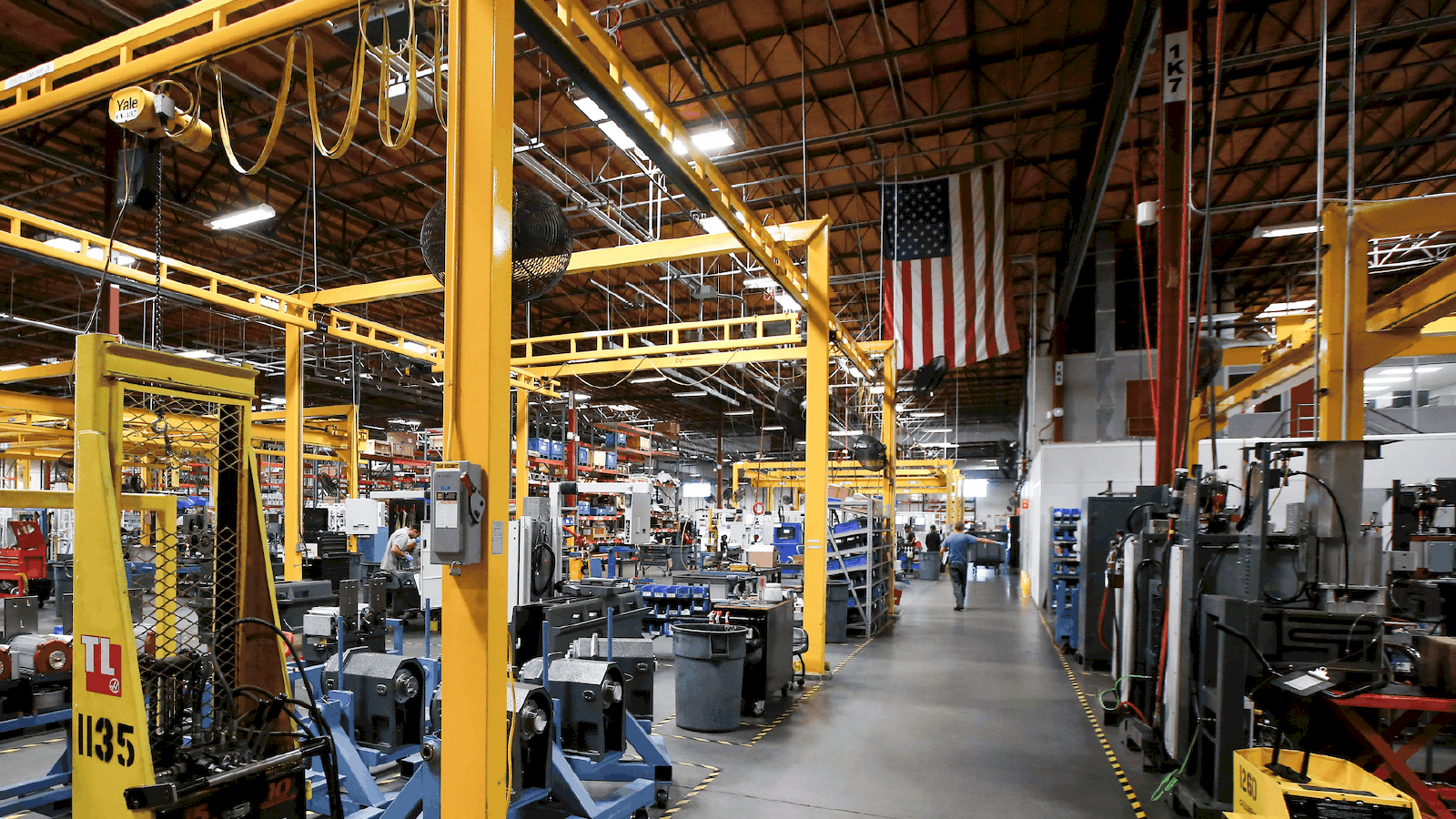
The Manufacturing Institute—the workforce development and education partner of the NAM—is partnering with the Charles Koch Institute to expand second chance hiring opportunities in the manufacturing industry.
What is second chance hiring? One in three Americans possess a criminal record. Without being offered a “second chance” at a stable job, many in this sizable talent pool are excluded from the workforce.
Why it matters: The manufacturing industry has more than half a million jobs open right now and will need to fill 4 million over the next decade. Second chance programs not only increase equal opportunity and diversity in the industry but are also a key tool for building manufacturing’s future workforce.
What we’re doing about it: The MI’s initiative, funded by a grant from the Charles Koch Institute, will offer resources and expertise to help employers make the best use of second chance hiring. These resources will include roundtable discussions and webinars, C-suite leadership events, case studies, a pilot program and original research for the manufacturing industry.
The MI says: “Second chance hiring gives businesses an opportunity to welcome highly motivated, engaged, productive and loyal new team members that may otherwise be overlooked,” said MI Executive Director Carolyn Lee. “This is not only the right thing to do for our businesses, but it’s also the right thing to strengthen our communities.”
- “This partnership enables the MI to educate manufacturers in America on second chance hiring best practices and help them utilize second chance hiring as a strategy to fill open jobs. This effort will also expand our Diversity and Inclusion initiative that’s critical to the future health and success of the industry.”
A real-world example: Nehemiah Manufacturing Co., a consumer-product manufacturer in Cincinnati, has a workforce of about 180 employees—about 80% of whom have criminal records, according to The Wall Street Journal (subscription). These employees serve in all sorts of positions, including leadership roles, from production to fulfillment and more.
- “We found that the population we were hiring who had criminal backgrounds were our most loyal people,” Nehemiah President Richard Palmer told the Journal. “When we were looking for people to work overtime, come in on Saturday or go that extra mile, it was the second-chance population that was saying, ‘I’m in.’”
The last word: “One of the biggest barriers to successful reentry for those with a record is lack of employment opportunities,” said CKI Executive Director Derek Johnson. “If we truly want to reduce recidivism and increase public safety, all while empowering those returning to our communities to contribute at their fullest potential, we need to expand second chance hiring opportunities. CKI is proud to join this partnership to scale that impact and expand second chance hiring across more employers.”
Manufacturing Institute Takes on Second Chance Hiring
Get the Latest News
Sign up here
The Manufacturing Institute—the workforce development and education partner of the NAM—is partnering with the Charles Koch Institute to expand second chance hiring opportunities in the manufacturing industry.
What is second chance hiring? One in three Americans possess a criminal record. Without being offered a “second chance” at a stable job, many in this sizable talent pool are excluded from the workforce.
Why it matters: The manufacturing industry has more than half a million jobs open right now and will need to fill 4 million over the next decade. Second chance programs not only increase equal opportunity and diversity in the industry but are also a key tool for building manufacturing’s future workforce.
What we’re doing about it: The MI’s initiative, funded by a grant from the Charles Koch Institute, will offer resources and expertise to help employers make the best use of second chance hiring. These resources will include roundtable discussions and webinars, C-suite leadership events, case studies, a pilot program and original research for the manufacturing industry.
The MI says: “Second chance hiring gives businesses an opportunity to welcome highly motivated, engaged, productive and loyal new team members that may otherwise be overlooked,” said MI Executive Director Carolyn Lee. “This is not only the right thing to do for our businesses, but it’s also the right thing to strengthen our communities.”
- “This partnership enables the MI to educate manufacturers in America on second chance hiring best practices and help them utilize second chance hiring as a strategy to fill open jobs. This effort will also expand our Diversity and Inclusion initiative that’s critical to the future health and success of the industry.”
A real-world example: Nehemiah Manufacturing Co., a consumer-product manufacturer in Cincinnati, has a workforce of about 180 employees—about 80% of whom have criminal records, according to The Wall Street Journal (subscription). These employees serve in all sorts of positions, including leadership roles, from production to fulfillment and more.
- “We found that the population we were hiring who had criminal backgrounds were our most loyal people,” Nehemiah President Richard Palmer told the Journal. “When we were looking for people to work overtime, come in on Saturday or go that extra mile, it was the second-chance population that was saying, ‘I’m in.’”
The last word: “One of the biggest barriers to successful reentry for those with a record is lack of employment opportunities,” said CKI Executive Director Derek Johnson. “If we truly want to reduce recidivism and increase public safety, all while empowering those returning to our communities to contribute at their fullest potential, we need to expand second chance hiring opportunities. CKI is proud to join this partnership to scale that impact and expand second chance hiring across more employers.”
How to Talk to Employees About Vaccines
Get the Latest News
Sign up here
As the U.S. vaccine rollout expands to nearly all adults, manufacturers are figuring out how to encourage workers to be vaccinated. To help them, the NAM and The Manufacturing Institute are providing resources and advice through their This Is Our Shot project. Most recently, the project hosted a webinar to help employers frame conversations about vaccines, called Employer COVID-19 Vaccine Communications: Do’s and Don’ts. Here are some of the highlights.
The participants: The webinar was hosted by NAM Vice President of Brand Strategy Chrys Kefalas, the NAM lead of the This Is Our Shot project. It featured Ann Searight Christiano, director of the Center for Public Interest Communications at the University of Florida, and Jack Barry, a postdoctoral research associate for the University of Florida’s Center for Public Interest Communications.
Why communication matters: “The vaccines are becoming widely available and so people are really at a point where they no longer have to wait. It’s time,” said Christiano. “But as employers, you have a great deal of influence and trust with your employees and are well positioned to help build their trust and encourage them to get those vaccines.”
What to think about when you talk about vaccines: According to Christiano and Barry, there are eight factors to think about when developing vaccine communications: worldviews, timing, messengers, narratives, relationships, social norms, emotions and motivations. Christiano and Barry recommend taking people as they are—and responding to their particular identities and values.
Think about who and when: The timing and the messengers are extremely important. National health professionals are far more trusted on pandemic advice than celebrities, for example. People generally want messengers from their own communities, too. Think of the “influencers” in your workplaces—the respected leaders, the trusted employees—and consider using them in your campaigns, say Christiano and Barry.
The message itself: Use specifics to show how important it is to get vaccinated, such as that vaccines allow you to travel or hug your grandparents. And use the themes of choice, regret and control—often cited by vaccine hesitators—and frame them in a positive way to increase vaccine uptake.
Things to avoid: Don’t amplify people’s concerns and avoid appeals to unpleasant emotions like shame and fear, the researchers advise. Consider instead using pleasant emotions like pride, joy and parental love. Consider the motivations of the messenger, too. Be transparent and honest about why you want people to get vaccinated.
The last word: “Our role is to help all manufacturers get fact- and science-based information to safeguard workplaces and communities and to help end this pandemic. We’ll continue hosting webinars, curating the most effective tools available and deploying other research-proven resources at NAM.org/ThisIsOurShot,” says Kefalas.
For more details on how to create communications for your employees, check out the whole presentation here.
How 5G Is Transforming Manufacturing
Get the Latest News
Sign up here
More than half of all manufacturers will be testing or using fifth-generation cellular wireless technology (aka 5G) in some capacity by the end of 2021, according to a new study from The Manufacturing Institute. The big numbers:
- 91% of manufacturers believe 5G connectivity will be important to the overall future of their businesses.
- 91% of manufacturers indicate speed of 5G deployment will have a positive impact on their ability to compete globally.
- 88% of manufacturers indicate 5G connectivity will allow engineers to troubleshoot remotely.
All-encompassing: 5G is poised to help manufacturers in almost every part of their businesses, according to the study.
- Nine in ten manufacturers expect the utilization of 5G to lead to the creation of new processes (88%) and new businesses (86%). It can make supply chains more efficient and both machines and workers more productive. It also will likely lead to new improvements no one has anticipated yet.
Drilling down: Let’s look at just one facet of 5G’s potential impact: its effects on factory operations. This is how comprehensive the 5G transformation is expected to be:
- Four-fifths of manufacturers indicate 5G technology will be important to inventory tracking (83%), facility security (81%) and warehousing and logistics (81%) within their facilities.
- Three-fourths of manufacturers indicate 5G will also be important to inspection (76%) and assembly (76%) activities, with seven in ten saying packaging (72%) and employee training (71%) efforts will benefit from the deployment of 5G.
And let’s not overlook the fact that more than 90% of manufacturers expect cost savings of approximately 38% from their 5G connections.
Competitive advantage: “Manufacturers’ competitiveness depends on their ability to continuously improve the efficiency and effectiveness of their operations, and disruptive technologies are changing the way that firms innovate and produce,” said the Institute’s Center for Manufacturing Research Director and NAM Chief Economist Chad Moutray.
More information: You can join the Institute for a webinar on 5G technologies on Tuesday, April 6, at 2:00 p.m. ET. Register here.
Why a Navy Machinist Chose a Manufacturing Career
Get the Latest News
Sign up here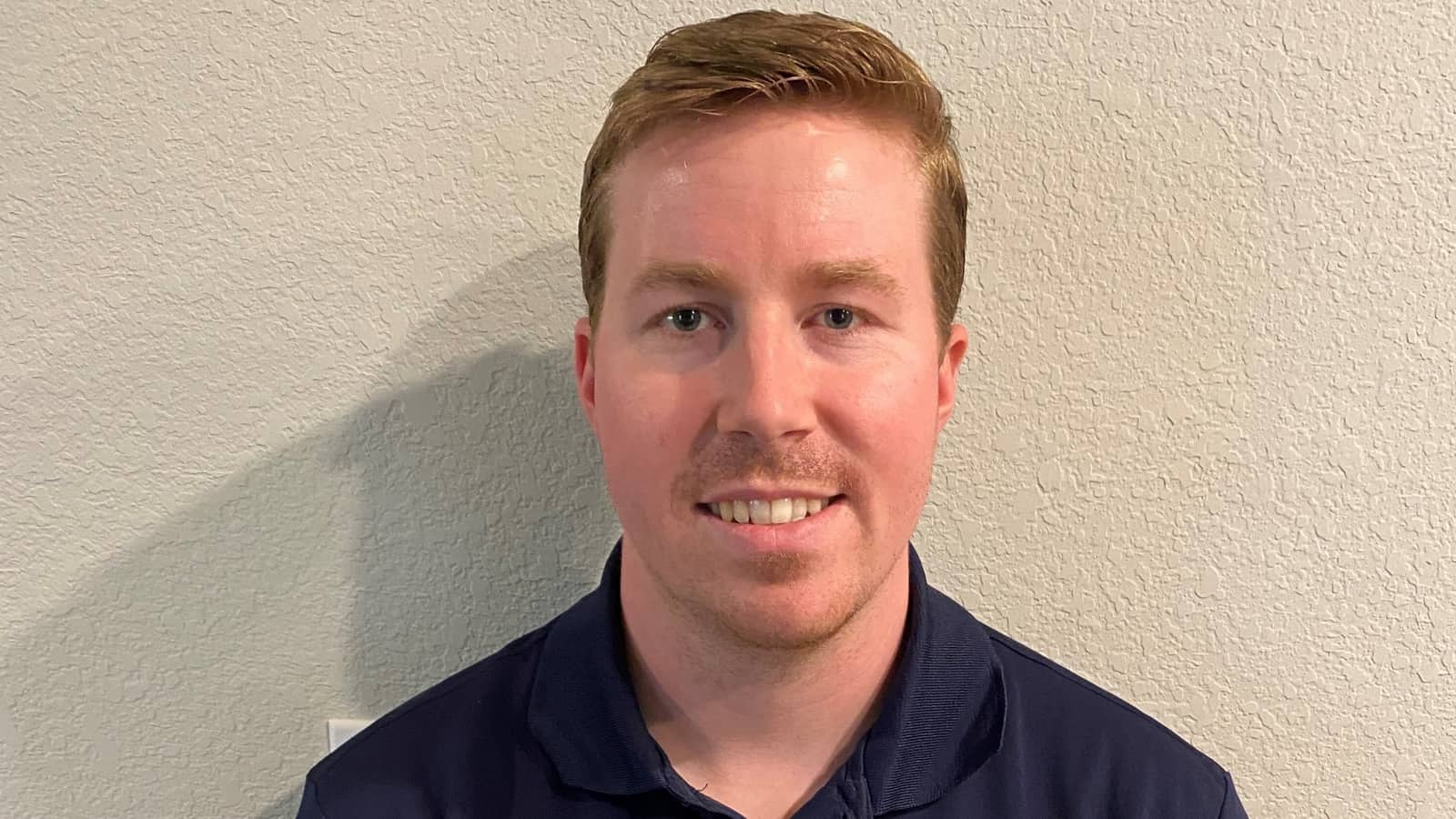
Derek Read always knew he wanted to join the Navy, and he enlisted after high school—rising to become a machinist’s mate responsible for maintaining, repairing and running the ship’s engine as well as corresponding machines and equipment. However, when it came time to find his next career nine years later, he wasn’t sure what to do—until his research turned up the The Manufacturing Institute’s Heroes MAKE America program, which helped Read translate the skills he already had into a modern manufacturing setting.
- “It’s definitely been enlightening,” said Read. “For the most part, I had the mechanical background and most of the skills, but HMA bridged the gap and gave me some technical expertise, as well as the extensive knowledge and certifications needed to get hired by a manufacturing company. Overall, it’s been an amazingly positive experience.”
One-on-one: Some of Read’s most valuable experiences were his meetings with executives and hiring officers at different manufacturing companies.
- “One of the greatest things they’ve given us is facetime with manufacturing company VPs, HR representatives and recruiters,” said Read. “They allowed us to get a better understanding of what was out there and what companies were looking for. Facetime like that is hard to come by unless you’re doing a specialized program like this, and it’s worth a lot.”
What’s next: Today, Read is fielding a few different job interviews, which he received via LinkedIn after Heroes helped him create his profile on the site. “Without HMA, I probably wouldn’t have been approached by those companies,” said Read.
Paying it forward: When asked what advice he’d give to other transitioning servicemembers considering the Heroes program, Read didn’t hesitate. “That’s easy—you’d be crazy not to take advantage of an amazing opportunity like this,” said Read. “The HMA program is outstanding. Take advantage of programs like this one, and don’t wait. Different manufacturing companies have a vast array of jobs. There’s definitely a job out there for you.”
From a distance: What makes Read’s enthusiasm all the more compelling is that he experienced the entire program remotely. But with the help of some virtual reality tools, he was able to participate without missing a step.
- “The VR goggles—that was amazing,” said Read. “I’ve never played with VR before. It’s almost like a video game. The training and tool seminars—I got to play with different tools and interact with the VR, doing measurements, calibrating equipment and going over parts of the manufacturing facility. It was a lot of fun to play with.”
That kind of substantive learning in an engaging environment is what the Caterpillar Foundation will bring to more heroes in the coming years, thanks to its new $2.25 million donation designed to help Heroes MAKE America increase its integration of virtual reality technology and expand training opportunities for the military community.
The last word: As Caterpillar Chairman and CEO Jim Umpleby said when the partnership was announced, “Caterpillar is proud of the support provided to veterans and their families through the Caterpillar Foundation’s donation to the Heroes MAKE America program. I am pleased the Foundation can help make this world-class skills training program available to all members of the global military community and connect them to careers in manufacturing.”
